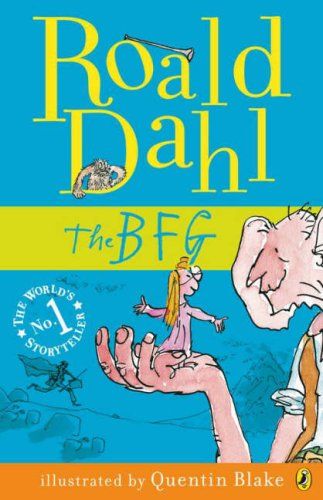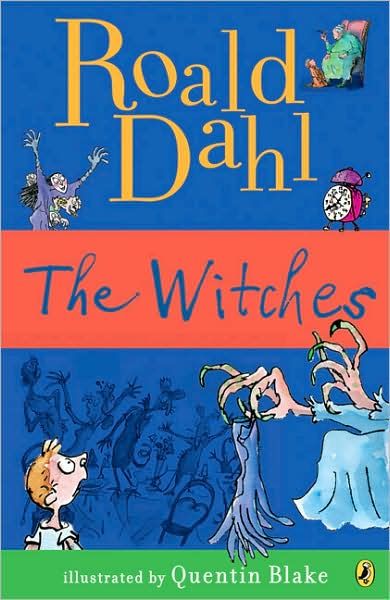
Roald Dahl's Favourite Themes
September 13th marks Roald Dahl day and as many know, Roald Dahl is one of the most famous children’s authors in the world. Today, he is matched only by popular greats such as the wonderful J.K. Rowling. Like Rowling, and perhaps even more so, Dahl’s books were successful because of the unique style and the wonderfully goofy imagery provided of his stories. Before Dahl, one could hardly expect to read such lines as, “Mr. Twit was a twit. He was born a twit. And, now at the age of sixty, he was a bigger twit than ever” - at least, not outside of a nursery rhyme.
But Roald Dahl’s children’s books are much more than nursery rhymes. In fact, beneath his childish jokes, wonky alliteration and made-up words, Dahl touched on heavier notions such as cruelty, the goodness of people, and even death. In order to pull this off in a children’s book, Dahl relied on a few effective tropes:
Unsentimental, Dark Humor
One of the major Roald Dahl tendencies that separates his work children from the likes of, say, Disney, is his dark take on humor. Dahl did not shy away from gory, detailed descriptions. In The Witches, we are treated to a more than adequate detailing of the witches’ balding, red-spotted heads, their disgusting, toe-less feet and even the sores from squeezing said feet into normal shoes. Or, we can recall Dahl’s explanation of the witching hour, in The BFG, which he writes is “a special moment in the middle of the night when every child and every grown-up was in a deep deep sleep, and all the dark things came out from hiding and had the world all to themselves.”

Luckily, Dahl smartly balanced his fearsome writing with bubbly humor. Having openly admitted to being able to write for children because he finds the same jokes amusing, Dahl could hardly go a book without mentioning a bum, a burp, or other digestive related jokes.
Child Narrators
In almost all of Dahl’s children’s books, the tale is told from the viewpoint of a child. Matilda and Danny, the Champion of the World are two excellent examples. The wonderful thing about Roald’s decision to write from this viewpoint is it made the novels easy to relate to as a young reader. Instead of working through novels led by characters much older, Dahl’s novels allowed kids to lead the stories, act on their own, and very often even act against the wishes of adults. This likely did loads to help establish the independence of many children, while also encouraging kids to use their imagination then and there. No need to wait until you’re older to accomplish anything exciting - if Matilda could walk to the library by herself, you can surely walk home from school!
Adult Villains
In most of Dahl’s novels the villains are adults. Whether they are grown witches, or parents, aunts, and grandmothers, Dahl hardly ever leaves the worst evils to other children. One exception might be Charlie and the Chocolate Factory, but then again, it was the parents who raised their children to be spoiled and rude. In The Twits, the older, hideous couple torment their pet monkeys and threaten to eat children. In George’s Marvelous Medicine, the evil character is George’s very own grandmother!

Many believe his tendency to create adult villains was based off of Dahl’s own experiences in boarding school, which he wrote extensively about in his autobiography Boy: Tales of Childhood, where he longed to be free of adult dominance.
This is not to say that Dahl never features good adults: in Matilda, the heinous Miss Trunchbull and the Wormwoods are balanced out by the loving, pure-hearted Miss Honey. Similarly, the Big Friendly Giant in The BFG is a direct counterpart to his evil, terrifying giant relatives. We can thank Dahl’s admiration of his mother, who inspired his storytelling with years of telling him traditional Norwegian myths, for his kind grown-up characters.
Outside Reflecting the Inner
Through both names (Mr./Mrs. Twit, the Big Friendly Giant, Aunt Sponge and Aunt Spiker) and physical description, Mr. Dahl could be counted on to clearly show who was good, and who was just plain naughty. Dahl’s troublesome characters were often ugly, fat, or grotesque in more than one way, whereas the angelic or innocent were always lovely. Before parents and teachers alike could start judging the books by their covers - I couldn’t resist - Dahl thoroughly explained his theory in The Twits:
“If a person has ugly thoughts, it begins to show on the face. And when that person has ugly thoughts every day, every week, every year, the face gets uglier and uglier until you can hardly bear to look at it. A person who has good thoughts cannot ever be ugly. You can have a wonky nose and a crooked mouth and a double chin and stick-out teeth, but if you have good thoughts it will shine out of your face like sunbeams and you will always look lovely.”And again in The Witches, after our lead boy asks how he feels about being turned into a mouse:
‘“I don’t mind at all,” I said. “It doesn’t matter who you are or what you look like as long as somebody loves you.”’
 At the top of Dahl’s writing techniques would have to be his unparalleled creativity. Roald Dahl had in him the ability to create mischief and adventure out of seemingly normal objects, animals and people. A peach is no longer just a peach but an entirely new world, and a candy factory is hardly a warehouse full of machines but rather a magical maze inhabited by Oompa Loompas.
At the top of Dahl’s writing techniques would have to be his unparalleled creativity. Roald Dahl had in him the ability to create mischief and adventure out of seemingly normal objects, animals and people. A peach is no longer just a peach but an entirely new world, and a candy factory is hardly a warehouse full of machines but rather a magical maze inhabited by Oompa Loompas.There seemed to be no end to Roald Dahl’s imagination, nor to the places he could take us.
Author Bio: Blake Meredith is an arts and entertainment blogger for DirectTVcomparison.com. She remembers Roald Dahl’s novel The BFG as one of the first books she fell in love with, mainly for the long descriptions of Frobscottle and whizpopping.









0 comments:
Post a Comment